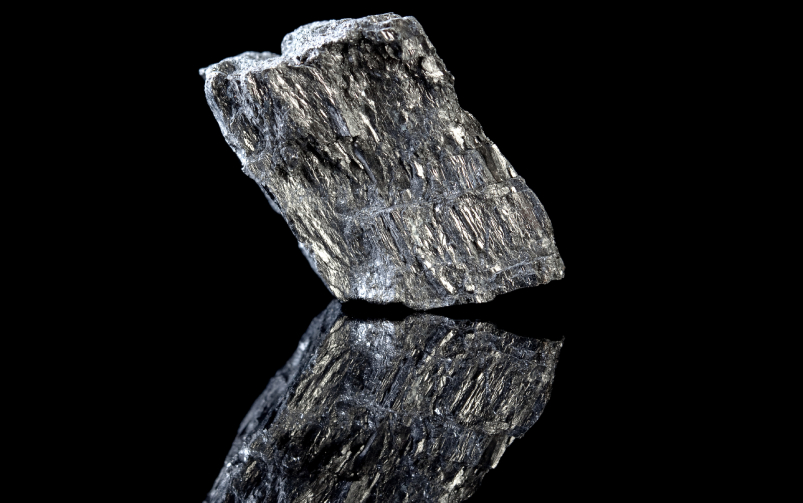Iron Ore Company of Canada’s operations in Labrador. The company, which is majority owned by Rio Tinto, recently cut its projected iron output. Courtesy of Rio Tinto.
Welcome back to your weekly mining news recap, where we catch you up on some of the news you may have missed. This week’s headlines include Maritime provinces planning to move away from coal, consultations for the Ring of Fire access road and potential bidders for Teck’s coal business.
The Supreme Court has ruled that the federal Impact Assessment Act is on balance unconstitutional, as reported by CTV News. The ruling stated that it was too broad in its assessment of environmental impacts, and provinces had raised concerns that Parliament was acting outside of its federal scope. Alberta had previously filed a constitutional challenge, supported by Ontario, Saskatchewan, three First Nations groups and the Indian Resources Council. Environment and Climate Change Minister Steven Guilbeault responded that the federal government would work to tighten the law.
A new set of environmental, social and governance (ESG) guidelines have been released by CIM’s Environmental and Social Responsibility Society, under the direction of the Mineral Resource and Mineral Reserve (MRMR) Committee. Developed over the course of several years by a CIM subcommittee led by experts in climate change, pollution prevention and more, the robust guidelines will serve as a source guide for all stakeholders in the mining industry and help companies develop effective ESG strategies at any project stage.
Rio Tinto has cut the production targets of the Iron Ore Company of Canada, which it is a majority shareholder of, as reported by Mining.com. The projection was cut from 10 to 11 million tonnes in July down to 9.3 to 9.8 million tonnes. Rio Tinto cited plant downtime and conveyor belt failures as reasons for the cut, as well as the impact of wildfires in northern Quebec in the previous quarter.
Natural Resources Minister Jonathan Wilkinson announced the first stage of funding for decarbonizing and expanding the power grids of Nova Scotia and New Brunswick, which totals $21.5 million, as reported by CBC. The plan would phase out coal usage in the provinces by 2030 by increasing the use of renewable energy. To hit the federal target of net zero emissions electricity by 2035, New Brunswick has been exploring nuclear power options, while Nova Scotia is looking at offshore wind power.
Marten Falls First Nation and Webequie First Nation continue to lead consultations around building an access road to the Ring of Fire region in northern Ontario, as reported by CBC. Open houses are being planned for the next several weeks. If the project is approved, the Northern Road Link would be about 117 to 164 kilometres long and connect the Ring of Fire to the provincial highway network. The proposed road has drawn pushback from other Indigenous communities concerned about mining in the region. The Northern Road Link project hopes to receive federal approval by 2028.
Japan’s JFE Steel Corp is in early discussions to purchase a stake in the metallurgical coal arm of Teck Resources, as reported by Reuters. Japanese consortium Nippon Steel had previously announced it was considering purchasing a 10 per cent stake in the metallurgical coal business for $1.15 billion.
The Chinese government tightened export controls for graphite in retaliation for the Biden administration’s strengthened AI chip export controls earlier this week, as reported by Reuters. Graphite is an important component in EV battery anodes, and China produces approximately 60 per cent of natural graphite and 90 per cent of synthetic graphite. This move follows Chinese export restrictions on gallium and germanium earlier this summer.
Pilot projects are testing biological processes for removing ammonia from treated wastewater effluent, wrote Sarah St-Pierre in the Sept/Oct issue of CIM Magazine. Canada’s federal regulations have recently become more stringent regarding the levels of ammonia permissible in wastewater released from mine sites, and are likely to get stricter in the future. Biological treatments are less complex and energy intensive than other approaches to ammonia removal, while also being more cost effective.
The Mining Association of Canada (MAC) is building on the industry’s commitment to take action on equity, diversity and inclusion (EDI) initiatives through the newest protocol in its Toward Sustainable Mining Program, wrote Alice Martin in the Sept/Oct edition of CIM Magazine. The protocol measures companies on three indicators, including leadership and strategy; advancing EDI; and monitoring, performance and reporting. MAC members will be required to begin publicly reporting on their performance regarding this protocol in 2026.
G7 countries are discussing several proposed plans to ban Russian diamonds from G7 markets beginning at the start of 2024, as reported by Reuters. The G7 markets collectively account for 70 per cent of global diamond demand, while Russia is the largest rough diamond producer with 30 per cent of the market share. The U.S. has already imposed sanctions on diamonds from Alrosa, the Russian state-owned company, but to seemingly little effect on its bottom line.
That’s all for this week. If you’ve got feedback, you can always reach us at editor@cim.org. If you’ve got something to add, why not join the conversation on our Facebook, Twitter, LinkedIn or Instagram pages?




